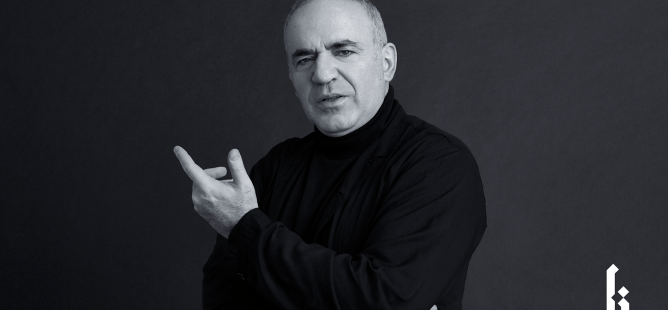

You can see the original interview at PCGamer.
By Rich Stanton
“Garry Kasparov may be the best chess player in history, and not just because he’s the last world champion to have reigned before the machines took over. Kasparov himself played a major part in the latter story: as well as being involved with chess software throughout his long career, he would go on to defeat the IBM supercomputer Deep Blue in 1996 before, a year later, losing the rematch.
Kasparov played professionally from the early 1980s and became the youngest-ever world chess champion after defeating Anatoly Karpov in 1985, a title he held until a loss to Vladimir Kramnik in 2000. Kasparov played professionally until 2005 and retired as the world’s top-ranked player.
Part of Kasparov’s career has always been his involvement in teaching young players, whether through the non-profit Kasparov Chess Foundation or the newly launched Kasparovchess.com—an all-encompassing chess site that includes lessons, a playing environment, documentaries, live tournaments, and now a masterclass series from the champ himself.
PC Gamer sat down with Kasparov to discuss his new masterclass, and what lesson he himself took from Master Yoda. Several of the lessons have been released for free and can be found throughout the article.
PC Gamer: You did a masterclass a while back. What was different this time around?
Garry Kasparov: You mention the other project, that’s nearly five years ago, that masterclass. That was a multi-hours progress programme that was built as a master class around advisors and students, where I could talk to them and it creates an atmosphere of teachers and experts, you know, telling you what to do, what not to do, how to evaluate the position. So I worked hard just to find the message that could work for people from different strengths categories, but this is different.
There’s a different level of expertise and this time I decided to do something quite different. So it’s the way I would look at telling stories about chess: still, you have similar components, but it’s no longer, you know, a teaching process, it’s not like being in a classroom. It’s more like Garry Kasparov’s chess experience through the lenses of his life, events and best games. And I’m always hopeful there are useful advices but it’s more like a personal story and it’s never been done this way before, and some of the stories are very fresh because I never told them at length and I think that’s what makes this masterclass, nearly 10 hours of recording, it’s unique because it’s much more personal than anything I did before.
At one point you discuss the lesson you took from Master Yoda, what was that?
Yeah, of course, the lesson is just it’s a great impression. It’s about controlling emotions. It made a big impression on me because it was the first Star Wars movie, actually probably the first Hollywood movie I saw on the big screen. But in 1980 we travelled to Malta, I was a member of a solid team. And after Malta we flew back to Moscow via Rome. And we had to stop and run for two days. Because no regular flights. We could spend two days as we wished. And while I think almost everybody went to see the Sistine chapel and other great places in Rome, I walked around, but I also wanted to see the movie.
So that’s The Empire Strikes Back. And my English was pretty lousy at the time, but still, I could understand it. And then of course, I rewatched many times. It’s all about you know, it’s controlling emotions. It’s Master Yoda telling Luke Skywalker that you know, unless you know how to control it, you will never succeed. That’s something that stuck in my memory.
One masterclass goes into the King’s Indian: you played that opening a lot in your career, what did you like about it?
Yeah, it’s very difficult to actually go way back to the centre, and just to understand the attraction of certain openings. I think it’s just sharpness. More likely, it’s the high level of uncertainty. So because it created unbalanced positions. Yes I knew that I was giving, you know, just an edge—by the way, you look at computers today, and they just, you know, they immediately say, Oh, you’re just losing. But, you know, 40-50 years ago, nobody cared. So it’s all about creating positions that could offer you opportunities to turn the tables. I played King’s Indian to the end of my path, almost to the end of my professional career.
Yeah. Probably less, less in the last few years. But yeah, I think I actually stopped playing it late 90s, I had a painful defeat from Kramnik in 1997 in Novgorod [laughs] and I thought, okay, maybe it’s enough. But this opening, you know, alongside with Banani, with King’s Indian and then Grunfeld. Those are my typical choices. But at the same time, you know, I knew that to become world champion, I had to look for classical openings, you know, and so, I played them. I played all sorts of openings, always looking for new ideas, though again: Just putting bishop on g7? Yeah, it’s still my child’s passion that hasn’t died.
You can check out the full masterclass at kasparovchess.com, and can read our longer interview with Kasparov about his history with computers and chess here.”

